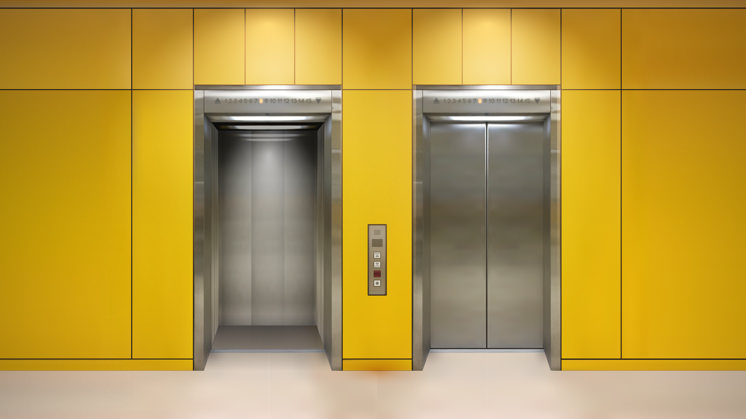In major tall commercial buildings, vertical transport is one of the major investments. Considering the amount of financial investment involved, it is good to have a well-defined program for elevator maintenance. An elevator is made up of several extremely complex systems with several parts that need to be maintained.
Good maintenance prevents excessive wear and tear and ensures continued operation. Given the complex nature of modern elevators, it is imperative to ensure that the equipment continues to perform as it was originally designed. This calls for high reliance on qualified, trained technicians, and the right tools and equipment.
There are several components of an elevator that require regular maintenance and they are categorized according to their location.
- The machine room
- The hoistway, or the car
Elevator Machine Room
The elevator machine room is the center of the elevator system. It contains the elevator hoisting machines, motor-generator sets or solid-state power supply, and control equipment. The control equipment is an essential part of the total operating mechanism that accelerates, decelerates, and levels the car at each floor. Most of the routine maintenance takes place in the machine room. This includes routine servicing of motors, generators, switches, contacts, brakes, and controls.
Hoistway
The hoistway contains the guide rails on which the elevator car and counterweight run; the corridor doors, hangers, door locks, and operating mechanisms; switches and other operating and safety devices; and space for cables and other equipment. Equipment within hoistways that requires maintenance includes corridor door hangers and locks, buffers, safety devices, and switches. Most maintenance of these components must be performed from inside the hoistway and outside the elevator car. The hoistway pit houses the car and counterweights buffers, cable pulley and tensioning devices, and limit switches. The overhead of the hoistway may contain the Overspeed governor mechanism and limit switches with space for the safety of personnel on the top of the elevator car.
Elevator Car
With few exceptions, elevator cars are fire-resistant, well-ventilated structures. Maintenance requirements for elevator cars include servicing door operating equipment and ventilation equipment at the top of the car and safety equipment at the bottom. This work must also be performed from within the hoistway.
Flooring in elevator cars requires daily cleaning and service and must be replaced more often than other floorings because of the amount of traffic. When replacing the floor, use nonslip material and nonflammable solutions in refinishing or cleaning the cab. Flooring, along with the care of car interior finishes, is usually the responsibility of the property owner.
Routine Elevator Maintenance Checklist
To keep the elevator in good condition, check and correct the following;
- Travel time between floors
- Response time
- Starting and stopping
- Door operation
- Leveling
- Hall and call lights and floor indicators
The elevator’s support system can be maintained by checking and repairing;
- Communications devices like the telephone
- Emergency lighting and alarms
The physical condition around the elevator should also be maintained through;
- Proper cleanliness
- Checking and repairing interior damage
- Checking and repairing signage
Elevator System Reviews
An elevator needs periodic reviews to check that the system is being properly maintained and also to spot components and areas that need improvement and modernization. In addition to proper maintenance, it is important to conduct a separate elevator system review with the help of in-house personnel or an elevator professional.
Elevator Performance Review
As indicated earlier, the proper working of the elevator depends on the level of maintenance. The first indicator of poor elevator maintenance is increased floor-to-floor elevator operating and/or waiting times. The elevator’s function should periodically be compared with the manufacturer’s specifications to determine the overall performance.

